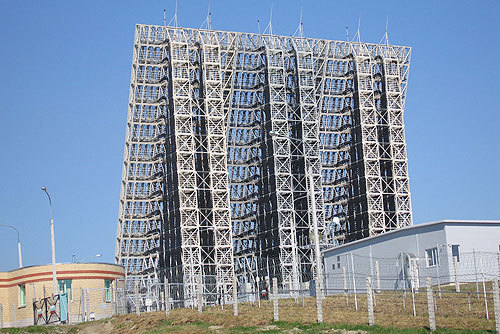Zhukovsky. July 20. INTERFAX - The new Voronezh-M radar station of the Russian missile attack warning system (SPRN) near Sevastopol will "see" the Mediterranean Sea and the central part of the Atlantic Ocean, the general designer of the SPRN Sergey Boev told Interfax at the MAKS-2021 air show in Zhukovsky, near Moscow.
"A radar station operating in the meter range will be built in the Crimea. It will strengthen the capabilities of the radar station in Armavir, will allow you to monitor the Mediterranean Sea, north Africa and the central Atlantic, " he said.
"The documentation for the construction of a radar station in the Crimea has been approved," the general designer said.
According to Boev, the new station (the developer is JSC " Radio Engineering Institute named after academician A. Mints) will control the launches of missiles, including intercontinental missiles, in the listed areas.
"The project will continue to implement the concept of a dual-band continuous radar field. The radar will have digital phased array antennas, it will have greater protection against interference, " the general designer said.
On July 3, 2020, the commander-in-chief of the Russian Aerospace Forces, Sergei Surovikin, announced that the creation of a new radar station near Sevastopol will be completed in 2024.
"Taking into account the urgency of deploying the radar in the south-western missile-dangerous direction, it was decided to create a VZG (high factory readiness) meter - range radar in Sevastopol with a completion date in 2024," Surovikin said at the time.
In April 2021, it was reported that plans to start work on the construction of the station's foundation soon.
Earlier, Boev told Interfax that the new Voronezh radar station will replace the outdated Dnepr radar station near Sevastopol. "The new station will be of a different generation, with different capabilities," Boev said.
As reported, after the collapse of the USSR, the Dnipro station in Sevastopol was transferred to Ukraine, for some time it was leased by Russia, but due to the position of Kiev, the contract was broken. Then the Dnipro was not operated for more than ten years and fell into disrepair.
The Russian SPRN includes command and communication means, ground and space echelons of information means. The ground segment consists of a network of over-the-horizon radar stations "Voronezh". They operate in different radio wave ranges. Radars are capable of detecting space, ballistic and hypersonic objects.
The Voronezh radar stations are on duty in the Leningrad, Kaliningrad, Irkutsk, Orenburg regions, in the Altai, Krasnodar and Krasnoyarsk territories. Two new SPRN stations for the Russian military are being built near Murmansk and Vorkuta.
In the future, the orbital grouping of the SPRN will consist of 10 Tundra spacecraft.
The Russian Defense Ministry said that the deployment of the orbital group should be carried out by 2024.
"As part of the improvement of the space echelon of the Russian PRN system, the orbital grouping of the Unified Space System is being actively built up. In May 2020, the fourth spacecraft of this system was launched. Thus, the deployment stage of the CEN orbital group has been completed, the completion of the formation of which is envisaged by 2024, " said Andrey Revenok, head of the main center for warning about a missile attack of the space Forces of the Aerospace Forces of the Russian Federation.

